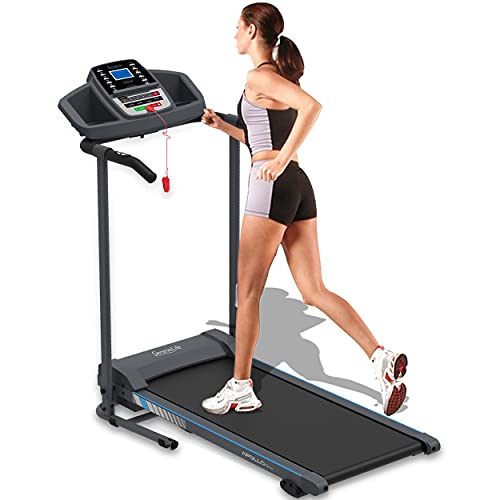The Rise of Non-Electric Treadmills: An Eco-Friendly Choice for Fitness Enthusiasts
In current years, the fitness market has witnessed a surge in need for non-electric treadmills. As individuals end up being more conscious of their carbon footprint and seek sustainable alternatives for their exercise regimens, non-electric treadmills have become an appealing alternative to their motorized equivalents. This blog site post looks into the benefits, types, and functions of non-electric treadmills, culminating in an extensive FAQ section to attend to typical inquiries.
What is a Non-Electric Treadmill?
A non-electric treadmill, typically described as a manual treadmill, operates without a power source. Rather of being propelled mechanically, the user's body weight and movement drive the belt. This style creates a distinct experience, often requiring more effort however using a number of benefits in terms of physical fitness and sustainability.
Benefits of Using Non-Electric Treadmills
- Sustainability: Non-electric treadmills remove the requirement for electricity, making them eco-friendly. This reduction in energy usage can significantly add to lower electricity expenses and a decreased carbon footprint.
- Boosted Workout Efficiency: Users must actively engage their muscles to maintain speed, which can lead to more effective exercises. This increased effort can equate to a greater calorie burn compared to electric designs.
- Flexibility: Many non-electric treadmills can be changed to provide various incline levels. This function enables users to customize their exercises, targeting numerous muscle groups and difficult themselves in new methods.
- Toughness: Generally, non-electric treadmills have less mechanical components than powered versions, leading to lower maintenance costs and increased durability.
- Compact Design: Many non-electric treadmills are developed with portability in mind, making them easy to move and store, ideal for those with restricted area.
Kinds Of Non-Electric Treadmills
Non-electric treadmills can be classified into several types based on style and features:
| Type | Description | Pros | Cons |
|---|---|---|---|
| Woodway Treadmills | Known for their curved shape, offering an unique running experience. | Lowers influence on joints, suitable for runners. | Normally more costly. |
| Flat Non-Electric Treadmills | Basic design offering straightforward functionality. | Affordable and easy to use. | Might not have actually advanced functions. |
| Incline Manual Treadmills | Allows users to set an incline for included problem. | Flexible and adjustable workouts. | Can be physically requiring. |
| Folding Non-Electric Treadmills | Space-saving designs that can be quickly saved away. | Hassle-free for little home. | Might be less tough than non-folding choices. |
Secret Features to Consider
When selecting a non-electric treadmill, consumers should prioritize the following features:
- Build Quality: Ensure that the frame is strong and made of long lasting materials to withstand daily usage.
- Running Surface: A broader and longer running surface supplies a more comfortable experience, specifically for taller individuals.
- Incline Options: Adjustable incline settings can improve exercise range and intensity.
- Weight Capacity: Check the weight limit to guarantee the treadmill accommodates all intended users.
- Mobility: If space is a concern, search for a lightweight treadmill with wheels for simple motion.
- Service warranty: A great guarantee reflects the producer's confidence in their item, providing peace of mind to customers.
Non-Electric Treadmill vs. Electric Treadmill
| Function | Non-Electric Treadmill | Electric Treadmill |
|---|---|---|
| Source of power | Manual (no electricity required) | Requires electricity |
| Upkeep | Very little, frequently needs no repair work | May require mechanical servicing |
| Calorie Burning | Usually higher due to user effort | Varies, often lower for the same speed |
| Customizability | Limited to manual changes | Offers numerous pre-set programs |
| Expense | Typically more inexpensive | Can be more expensive due to features |
Often Asked Questions (FAQ)
1. Are non-electric treadmills appropriate for beginners?
Yes, non-electric treadmills can be appropriate for novices, although they might need a steeper learning curve for those unfamiliar with manual treadmills. A mild start on a low incline can reduce newbies into their fitness journey.
2. How do I maintain a non-electric treadmill?
Upkeep is very little. hometreadmills.uk cleansing and looking for any wear on the belt or deck can assist prolong the life of the treadmill. Constantly refer to the maker's guidelines for detailed maintenance instructions.
3. Can I run on a non-electric treadmill?
Absolutely! Lots of non-electric treadmills are created to accommodate running. Nevertheless, users must begin by walking and slowly increase their speed and incline as they build strength and endurance.
4. How do non-electric treadmills manage weight?
Many non-electric treadmills have a weight capacity similar to electric designs. Nevertheless, it is necessary to inspect the specs to guarantee appropriate support for the user's weight.
5. Are there any drawbacks to using a non-electric treadmill?
Some users might discover that non-electric treadmills require more effort, potentially making them more strenuous. In addition, they might do not have sophisticated functions discovered in electric designs, such as built-in workouts or heart rate displays.
As more individuals look for environmentally friendly and efficient fitness options, non-electric treadmills have actually begun to record the attention of exercise enthusiasts. With their mix of sustainability, efficiency, and sturdiness, these manual gadgets can raise any workout regimen. By understanding their advantages, types, and important features, customers can make informed choices in picking the best treadmill for their requirements, eventually supporting a much healthier way of life while contributing to a greener world.

